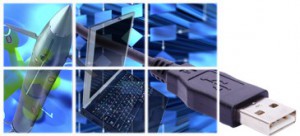IATMS is a unified framework for geolocation knowledge that provides instant visualization of MRO assets, improving asset utilization and scheduling and MRO flow-times. IATMS also provides knowledge discovery for equipment task and resource relationships using geolocation and other data sources.
The Air Force’s Tinker Air Force Base (TAFB), Oklahoma City Air Logistics Center (OC-ALC) and the Hill Air Force Base (HAFB), Ogden Air Logistics Center (OO-ALC) are responsible for the maintenance, repair, and overhaul of billions of dollars worth of aircraft each year. In addition to the actual nuts and bolts work on aircraft, a significant undertaking in itself, MRO activities involve the coordinated planning, scheduling, and moving of not only the aircraft, but also the thousands of pieces of ground support equipment (GSE) and other assets used in MRO work. At Tinker, more than 3500 items, ranging from huge cranes and air-conditioners to wrenches and drills, are required for MRO work that is spread over an area the size of a small city. MRO planning and coordination is a tightly orchestrated endeavor: aircraft, parts, and GSE required for each step, large items that can be difficult and time consuming to stage and deploy, must be in place when and where they are needed and must accommodate the requirements of other ongoing MRO work. A lag at any step in the schedule—the result of movement conflicts or double scheduled GSE, for example—can have a ripple effect, impacting other downstream MRO work and leading to missed deadlines, snowballing cost overruns, and, most significantly, compromised mission readiness.
Crucial to the effective management and coordination of MRO work is the real-time tracking of the GSE used in those MRO activities. The inability to track the location of GSE makes it particularly difficult to stage, deploy, and coordinate MRO resources for aircraft and GSE movement. KBSI, in an initiative funded by the U.S. Air Force, has developed an automated system for asset tracking that, with the help of Ekahau’s powerful Positioning Engine™ (EPE) kit, provides a unified framework for acquiring and managing geolocation knowledge of GSE both indoors (inside the MRO shops and hangers) and outdoors (on the aircraft ramps). The Intelligent Asset Tracking and Management System (IATMS) provides a unique software interface that allows users to track and manage, in real time, GSE onscreen and to collect valuable data concerning the movement history of GSE.
IATMS uses detailed background maps of the area under observation to show the location of tagged GSE. An IATMS module logs the position of GSE by continuously collecting data from the attached Wi-Fi tags. The module first connects to the Ekahau Positioning Engine, extracts current tracking data, including the x and y coordinates of GSE and the current battery level of the Wi-Fi tags, and stores this data in an attached Access database. This feature allows users to monitor the status of the asset tracking tags used to sense and transmit location information and to track the complete movement path of a particular GSE over the last week, month, etc.—data that provides valuable insights into how assets are being moved and utilized.
Phase II Development
Phase II of the IATMS initiative at OC-ALC focused on hardening and extending the IATMS framework to include fusion, analysis, and mining of location, asset, work, and workforce data. The Phase II IATMS framework provides allocation optimization by considering location information and other data sources that relate to work breakdown structures, personnel, and schedules.
 The success of IATMS at Tinker spurred a pilot implementation of the system at Hill Air Force Base in Utah. At Hill, KBSI demonstrated the IATMS capability for round-the-clock monitoring of ten selected pieces of GSE using the bases’ existing 802.11b infrastructure. IATMS also, using data from the Ekahau Positioning Engine, collects and stores detailed tracking information, providing rich summary statistics on the movement history of targeted GSE.
The success of IATMS at Tinker spurred a pilot implementation of the system at Hill Air Force Base in Utah. At Hill, KBSI demonstrated the IATMS capability for round-the-clock monitoring of ten selected pieces of GSE using the bases’ existing 802.11b infrastructure. IATMS also, using data from the Ekahau Positioning Engine, collects and stores detailed tracking information, providing rich summary statistics on the movement history of targeted GSE.
This material is based upon work supported by the United States Air Force under Contract No. F34601-04-C-0138. Any opinions, findings and conclusions or recommendations expressed in this material are those of the author(s) and do not necessarily reflect the views of the United States Air Force.
